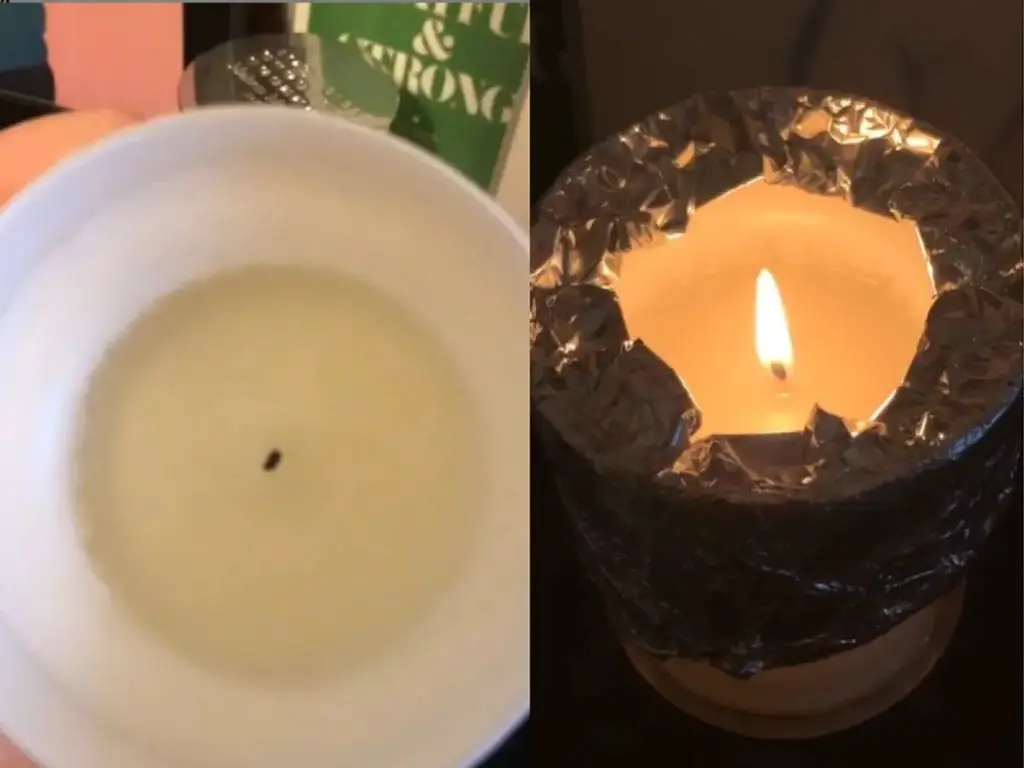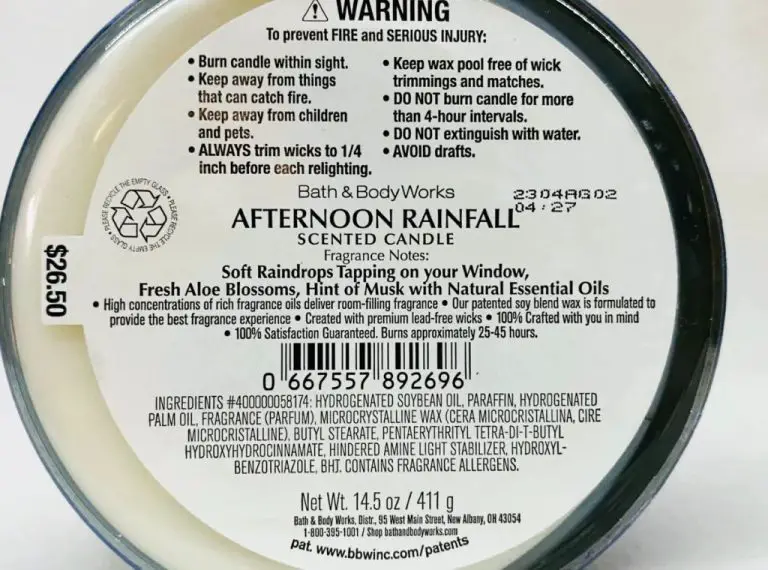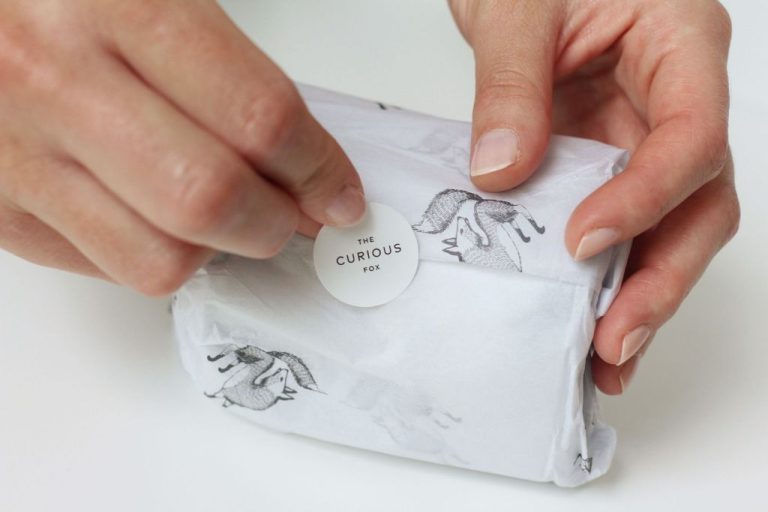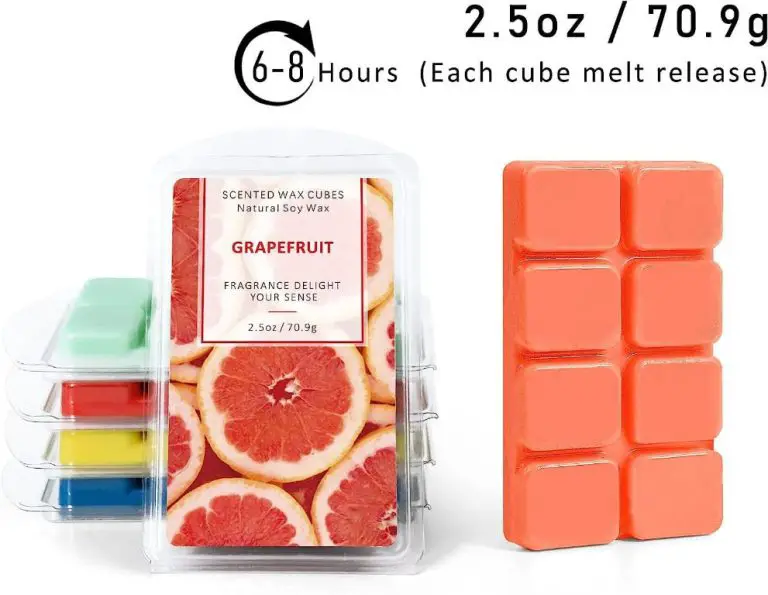Why Is My Candle Not Burning All The Way Down?
“Candle tunneling,” also known as “candle drowning,” refers to when a candle burns down into the middle but leaves wax around the edges unmelted. This makes the flame burn in a tunnel down the center, rather than burning evenly across the top as it melts down. There are several potential causes of tunneling, including issues with the wick being off-center or too small, wax melting point being too high, curing problems, and environmental factors like drafts or low temperatures. This article will explore the common reasons for tunneling and tips to troubleshoot and prevent it.
Wick Issues
One of the most common reasons a candle won’t burn all the way down is an improperly sized or placed wick. The wick is the heart of the candle, acting as a fuel delivery system to pull melted wax up into the flame. If the wick is too short, small, thick, or improperly placed, it can prevent the candle from burning properly.
A wick that is too short may become engulfed by melted wax before reaching the bottom of the container. It needs to be long enough to reach all the way down as the candle burns. Wicks that are too small or thick can also hinder capillary action, restricting the fuel supply to maintain the flame. They may need to be wider or thinner to optimize wax flow.
The wick also needs to be properly centered in the candle. If placed too close to the edge, the flame can tunnel down one side without melting all the wax. Centering the wick allows for even burning and full usage of the wax. Properly trimming the wick before each burn, usually to 1⁄4 inch, will also promote complete usage of the wax.
Wax Issues
One of the most common reasons a candle may not burn all the way down is due to issues with the wax. The wax is arguably the most important component of a candle, as it provides the fuel for the flame. There are a few key wax-related factors that can impede proper burning:
If the wax is too soft, the candle may burn too quickly, creating a pool of liquid wax. This is often seen in containers candles made from lower melting point waxes like soy or palm waxes. The wax pool reaches the side of the container quickly, extinguishing the flame. Harder waxes like paraffin are less likely to cause this issue.
Conversely, if the wax is too hard for the wick being used, melting of the wax may be inhibited. This slows the capillary action that brings fuel up the wick. Beeswax and some paraffin blends fall into the harder wax category. Pairing them with a larger, more robust wick can help improve performance.
Low quality wax that contains impurities is another potential culprit. Contaminants like polymers added to strengthen the wax can clog the wick, disrupting fuel supply. Using wax from a reputable supplier and filtering/refining methods helps minimize contaminants. Testing wax quality before candle production is advised.
The composition and melt point of the wax must be optimized for the candle’s specifications. Most candle wax blends include paraffin, soy, palm, beeswax or a mixture. The Elements of a Candle: Wax provides an overview of wax types and key properties like melt point that factor into performance.
Container Size
One of the main reasons a candle may not burn all the way down is if the container is too wide. For proper wax pooling and full melt, the container needs to be narrow enough to allow the heat to reach the outer edges of the wax.

According to the Avery Candle Label Size Guide, popular candle container sizes are:
- 100ml – 50x30mm or 160x20mm label
- 200ml – 70x40mm or 230x30mm label
- 300ml – 80x50mm or 250x40mm label
If a candle container is too wide for the wax volume, the heat will not properly pool and melt the outer edges. This will lead to wax left around the sides and an uneven burn. For proper full melt, choose a container narrow enough for complete wax pooling based on the wax volume.
Burning Conditions
One of the most common reasons a candle may not burn all the way down is due to the burning conditions. Factors like insufficient airflow, candle placement, wick length, and more can affect how evenly and completely the candle burns.
If the candle is placed in a confined space or an area with stagnant air, the flame can easily become oxygen deprived and burn inconsistently or go out. It’s recommended to burn candles in open, well-ventilated areas for optimal performance. Avoid small, enclosed spaces and make sure air can freely circulate around the candle (source).
Drafts and breezes can also cause issues, as they may blow the flame around and make it uneven. Shelter the candle from drafts and air vents when possible. It also helps to avoid areas with temperature extremes or rapid temperature changes (source).
The wick length impacts burning as well. Make sure to trim the wick to 1⁄4 inch before each use for clean, even burning. Long or crooked wicks tend to produce more soot and an uneven flame (source).
Pay attention to how long the candle burns each session. In general, candles shouldn’t burn for over 4 hours at a time and should be allowed to cool for at least 2 hours before relighting (source). This allows the wax to reset and maintain an even melt pool.
Curing Issues
One of the most common reasons a candle may not burn all the way down is if it has not been properly cured after pouring. Curing is the process of allowing the candle to rest undisturbed as the wax continues to harden and stabilize over time. This allows the fragrance oils and other additives to fully bind with the wax, ensuring even burning and full fragrance throw.
If a candle is not cured for long enough or cured improperly, the result is likely to be poor or uneven burning, tunneling, and wax left unburned at the bottom or sides. The curing time required can vary based on factors like the wax type used, additives, and candle container size and shape. According to experts, paraffin candles may only need 24-48 hours to cure fully, while soy or beeswax candles often require 1-2 weeks. Candles should be cured with lids off in a dry, temperate area away from drafts and direct sunlight.
To ensure proper curing, it’s important to follow the recommended cure times for the specific wax blend and candle design. Rushing the cure may lead to candles that don’t burn properly all the way to the bottom. Patience during the curing process helps the wax stabilize for ideal hot throw and burn performance.
Additives
Extra oils, fragrances, or dyes added to candle wax can interfere with the candle’s ability to burn all the way down. Using too much fragrance oil is a common reason candles tunnel or leave wax around the edges (Anwar, 2009). The extra oils in fragrance make the wax softer, reducing its melting point and ability to hold a full melt pool. Excess dye can also lead to poor burning by disrupting the wax chemistry. According to Northwood Candle Supply (2022), some additives like stearic acid improve hardness and burn quality. But going overboard with additives throws off the balance of waxes needed for ideal candle performance.
Wick Trimming
One of the most common reasons a candle may not burn all the way down is an improperly trimmed wick. For optimal performance, the wick height should be trimmed to 1⁄4 inch before lighting. This allows the wax pool to liquefy evenly and prevents the flame from getting too large and sooty.
According to Marthastewart.com, “If you don’t trim the wick to about 1/4 inch before lighting, it can create a very large flame and produce excess soot.”1 Trimming the wick regularly as the candle burns down is also important. Use sharp scissors or a wick trimmer to trim off any excess blackened portions and maintain a consistent 1⁄4 inch height.
An untrimmed wick causes uneven burning and wax tunneling down the sides where the wick meets the wax. This leaves unmelted wax around the edges and prevents the candle from pooling properly. Always remember to trim the wick before each use for best results.
Troubleshooting
If you notice your candle is not burning all the way down and developing a tunnel, there are several troubleshooting techniques you can try to fix it.
The most common issues that cause tunneling are:
- An oversized or under-trimmed wick – To fix this, trim the wick to 1⁄4 inch before each lighting. Make sure the wick is not too large for the diameter of the container.
- Low melt point wax or soft wax – Switch to a higher melt point wax or add hardeners to strengthen the wax blend.
- Drafts or low temperatures – Move the candle away from drafts and ensure the room temperature is at least 65°F.
- Insufficient cure time – Allow candles to cure for at least 2 weeks before burning to allow the wax to settle and strengthen.
To fix an existing tunnel, try these solutions:
- Heat the wax surface with a hair dryer to melt and level it. Trim the wick before relighting.
- Insert a wick bar or aluminum foil into the tunnel to bring the melt pool level with the edges as the candle burns.
- Pour additional wax into the tunnel, let it set up, then trim the wick before relighting.
Taking preventative steps like proper wick trimming and allowing cure time can help avoid tunneling issues. But even if a tunnel starts, these troubleshooting tips can often fix the problem.
Conclusion
Hopefully, this guide has provided some helpful insight into why your candle may not be burning properly. Here’s a quick recap of the key points:
The most common reasons candles don’t burn all the way down are issues with the wick being too short or thick, poor wax quality or formula, or placing the candle in a drafty area where it can’t burn correctly. Other factors like improper curing, additives in the wax, or failing to trim the wick as the candle burns can also lead to tunneling or an incomplete burn.
To troubleshoot, first examine the wick to see if it’s too short or thick and trim it down. Next, check the wax quality and try a higher grade of wax designed for better performance. Make sure to cure candles properly before burning, and place them away from drafts. Trim the wick periodically as the candle burns. With some trial and error, you should be able to achieve an even, full burn down to the bottom.
With a quality wick, high-grade wax, proper curing and placement, and attentive wick trimming, your candle should provide many hours of aroma and light all the way down to the bottom of the container.






